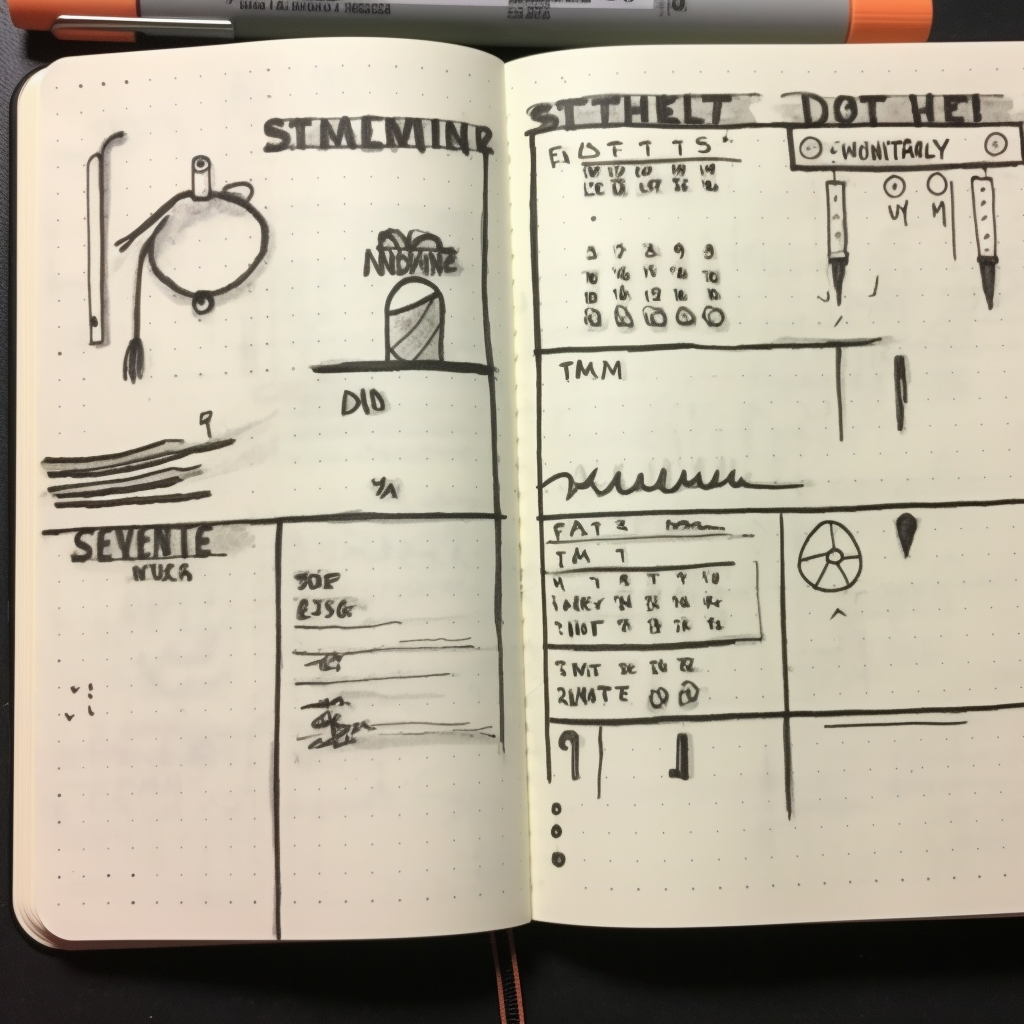Finding Flexibility in Structure
Last week, we discussed the benefits of structured journals like the Five Minute Journal and Oak Journal. Today, let's delve into a different kind of journaling system that offers more flexibility while maintaining structure – bullet journaling.
You may have heard of bullet journaling before. Unlike traditional lined-paper journals, a bullet journal contains dot grids instead. These dots provide a framework for organizing your thoughts and ideas with ease. By blocking out grids or boxes on these dotted pages, you can create bullet points, make sketches, add diagrams, or even draw banners and arrows to emphasize important information.
One remarkable aspect of bullet journals is their versatility. They allow you to blend different note-capturing techniques seamlessly. For instance, if you're attending a conference or learning event where you need to take extensive notes, a bullet journal becomes an invaluable tool for capturing all the essential information effectively.
On the other hand, when it comes to personal reflection or engaging in exercises like Julia Cameron's morning pages technique, the same bullet journal can be used as your go-to platform for introspection and self-expression.
The beauty lies in its ability to adapt according to your needs at any given moment. You can easily incorporate key questions from structured journals such as the Five Minute Journal by copying them into your index page for quick reference each day. From there onwards, you have complete freedom to answer those questions manually based on what resonates with you personally.

Bullet journaling also opens up possibilities for creating customized systems within your notebook should you desire more structure. Some individuals assign specific meanings to various symbols—squares representing tasks on their agenda or dots indicating particular items they've deferred—to establish comprehensive note management frameworks.
While some people prefer following strict systems within their bullet journals (which are widely available online), others opt for more freeform approaches that allow for spontaneous creativity. The choice is entirely yours.

When it comes to bullet journaling, quality matters. The LEUCHTTURM 1917 is a renown high-quality bullet journal with exceptional paper that resists feathering, bleeding, and ghosting—a perfect companion for fountain pen enthusiasts like myself.
Speaking of pens, if you're not into fountain pens but still want a reliable writing instrument, let me introduce you to the Pentel Energel rollerball pen. It boasts smooth ink flow without skipping or bleeding through pages while delivering bold lines and vibrant colors. With its wide range of color options available, this pen has become my go-to choice for all my writing needs. What's more, you can fit the inexpensive refill into some nicer pen holders like the Lamy Safari Roller ball. (You just have to move the spring from the top of the pen to the bottom then it works great).
In conclusion, bullet journaling strikes the perfect balance between structure and freeform expression. Its flexibility makes it adaptable to any situation or purpose you may have in mind when cracking open those dotted pages. Whether you need an organized system for note-taking during conferences or simply desire a platform for personal reflection and growth, bullet journaling offers endless possibilities.
Remember: managers produce results; leaders cultivate better thinking—leading to better results in every aspect of life. So why not apply this mentality even to something as seemingly simple as journaling? Embrace the art of bullet journaling today and put yourself in a position where creativity meets organization effortlessly!
Moral of the story: Find your own rhythm within structure and watch your ideas flourish!




